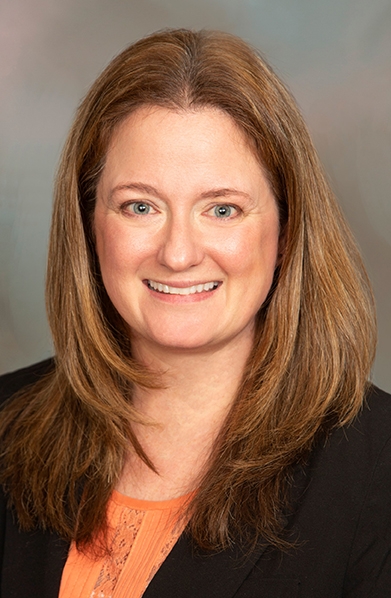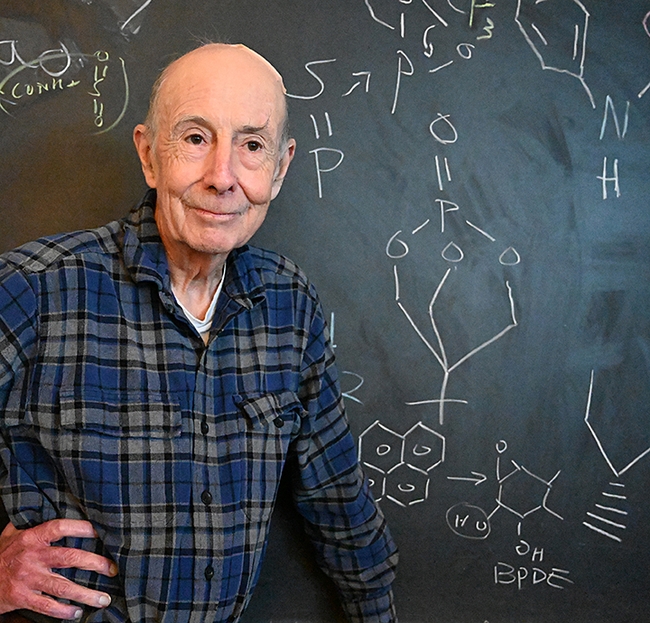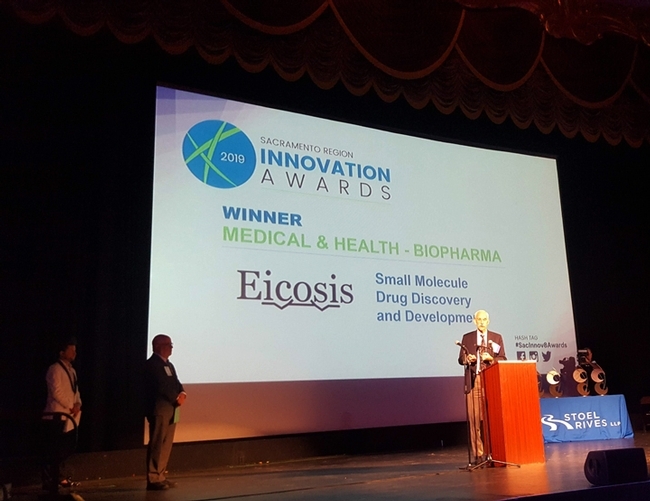
McReynolds, who co-founded EicOsis Human Health LLC with Hammock and served two years as its director of research, is its newly appointed chief executive officer. She succeeds Hammock, who has transitioned to chief scientific officer and chairman of the board of directors.
EicOsis, based in Davis, is a leader in the clinical development of soluble epoxide hydrolase inhibitors (sEH), an innovative approach to treating chronic inflammation and pain. Hammock's pioneering work on the sEH inhibitors spans 50 years.
“Dr. McReynolds will lead EicOsis through the commercialization of its new therapeutic solution for chronic conditions that affects tens of millions of people, including those with neuropathic pain but also osteoarthritis, Alzheimer's disease, and Parkinson's disease,” said Glenn Croston, chief operating officer. “Dr. McReynolds has deep experience advancing drugs through preclinical and clinical development, including EicOsis' leading drug EC5026. In addition, she has published extensively on the science of sEH as an important new drug target.”
McReynolds, who received her doctorate in pharmacology/toxicology from UC Davis in 2021, studying with Hammock, said “it's been an amazing opportunity being involved with EicOsis as an early preclinical stage company and seeing the transition of our lead candidate to clinical
“The scientific validation of our approach supports a truly disruptive product that could provide a safe, non-addictive, and effective treatment for pain and neurodegeneration, and I look forward to leading the company as we obtain clinical validation,” she said. “We have an experienced and dedicated team that has a long history of working together, and I am excited to continue working together in this exciting next stage.”
EicOsis has “completed the human phase 1a safety trials with no adverse effects," said Hammock, who holds a joint appointment with the UC Davis Department of Entomology and Nematology and the UC Davis Comprehensive Cancer Center.
Key Role. “As co-founder, Cindy has played a key role building EicOsis into a leader in therapeutics targeting sEH,” Hammock said. "Cindy's scientific insight, drive, and commitment ideally positions her to take EicOsis to the next level and builds on the vast body of science validating our approach. I know Cindy will continue to deliver great results for EicOsis and for a great many patients."
Hammock, in his role as CSO, “will continue to deliver cutting edge progress in translating soluble epoxide hydrolase inhibitors into clinical results,” Croston announced. A member of the National Academy of Sciences and the National Academy of Inventors, Hammock co-founded and built the company to translate these findings into "a revolutionary new solution for chronic inflammation and pain."
“We'd like to thank Bruce for his incredible leadership in the field and as CEO of EicOsis," said Chris Somerville, board member of EicOsis Human Health. "We're looking forward to his continued scientific leadership and to his continued support in Cindy's new role."
McReynolds, who has researched the biological activity of lipid mediators for the past 12 years, said her current efforts “focus on understanding the roles of lipid mediators in inflammation especially relating to pain and degenerative disease. My research focuses on developing tools for use in in vitro and in vivo knockout studies to understand their role in inflammation with a focus on mechanism of pharmacokinetics.”
Always aiming for a scientific career, McReynolds received a bachelor's degree (1999) in animal science from UC Davis and a master's degree (2001) in animal science from Washington State University (WSU). Her career advanced from senior research associate, Celera (formerly Axys) in South San Francisco to senior associate scientist of Miikana, Fremont, to project coordinator of Arete Therapeutics, South San Francisco, to UC Davis researcher.
At UC Davis, she served as the scientific program manager (2010-2017) for the Center for Integrative Toxicology, and as a graduate student researcher. She won a UC Davis Staff Assembly Citation of Excellence in Research in 2021. She earlier received the UC Davis 1999 Outstanding Senior Award, and several awards fromWSU: the 2000 Dr.Erb Outstanding Graduate Student Award; the 2001 Teaching Assistant of the Year, and the 2001 Outstanding Graduate Student. While a graduate student, she was supported by a National Institutes of Health Chemical Biology Training Grant.
Insect Developmental Biology. Sarjeet Gill, now a UC Riverside distinguished emeritus professor, and Hammock co-discovered sEH in 1969 in mice when they were researching insect developmental biology and green insecticides in the UC Berkeley lab of John Casida (1929-2018). Both hold doctorates from UC Berkeley.
Hammock explained that the enzyme is a key regulatory enzyme involved in the metabolism of fatty acids. It regulates a new class of natural chemical mediators, which in turn regulates inflammation, blood pressure, pain and other key biologies. Hammock's 50-year research has led to the discovery that many regulatory molecules are controlled as much by degradation as biosynthesis. "The epoxy fatty acids rapidly degraded by the sEH," Hammock said, "control blood pressure, fibrosis, immunity, tissue growth, depression, pain, and inflammation, to name a few processes."
Approximately 50 million Americans (20 percent of the population) suffer from chronic pain, according to the Center for Disease Control and Prevention. The annual economic toll is $560 billion, encompassing direct medical expenses, lost productivity, and disability claims. Pain research is now one of the top priorities of the National Institutes of Health (NIH).
EicOsis (pronounced eye-co-sis), derives its name from eicosanoid, “the major backbone of chemical mediators in the arachidonate cascade,” said McReynolds. “It symbolizes the epoxide group in chemistry, which is key to the anti-inflammatory chemical mediators and where the biochemical target called soluble epoxide hydrolase works.”
EicOsis won the “Sacramento Region Innovator of the Year” award in the medical health/biopharmaceutical category in 2019.
Attached Images:

UC Davis distinguished professor Bruce Hammock, chief scientific officer and chairman of the board of EicOsis Human Health LLC. (Photo by Kathy Keatley Garvey)

This was the scene at the Sacramento Region Innovation Awards program when EicOsis was named winner of the medical and health/biopharmaceutical category. Pictured is William Schmidt, Ph.D., of EicOsis. (Photo courtesy of Robb Wright)